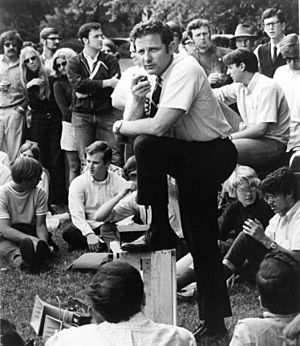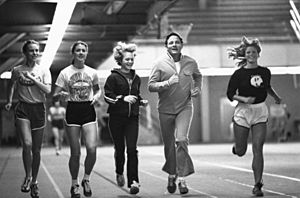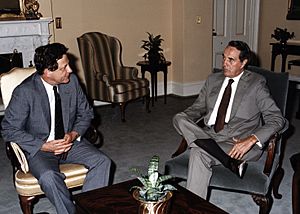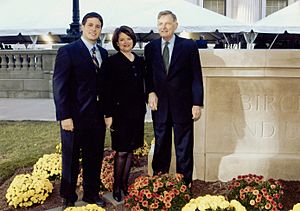Birch Bayh facts for kids
Quick facts for kids
Birch Bayh
|
|
|---|---|
 |
|
| Chair of the Senate Intelligence Committee | |
| In office January 3, 1979 – January 3, 1981 |
|
| Preceded by | Daniel Inouye |
| Succeeded by | Barry Goldwater |
| United States Senator from Indiana |
|
| In office January 3, 1963 – January 3, 1981 |
|
| Preceded by | Homer Capehart |
| Succeeded by | Dan Quayle |
| Speaker of the Indiana House of Representatives | |
| In office November 5, 1958 – November 9, 1960 |
|
| Preceded by | George Diener |
| Succeeded by | Richard Guthrie |
| Member of the Indiana House of Representatives from the Vigo County district |
|
| In office November 3, 1954 – November 7, 1962 |
|
| Preceded by | John Brentlinger |
| Succeeded by | Hubert Werneke |
| Personal details | |
| Born |
Birch Evans Bayh Jr.
January 22, 1928 Terre Haute, Indiana, U.S. |
| Died | March 14, 2019 (aged 91) Easton, Maryland, U.S. |
| Resting place | Arlington National Cemetery |
| Political party | Democratic |
| Spouses |
Marvella Hern
(m. 1952; died 1979)Kitty Halpin
(m. 1981) |
| Children | 2, including Evan |
| Education | Purdue University (BS) Indiana State University Indiana University Bloomington (LLB) |
| Signature |  |
| Military service | |
| Allegiance | |
| Branch/service | |
| Years of service | 1946–1948 |
| Rank | Private (1st Class) |
Birch Evans Bayh Jr. (January 22, 1928 – March 14, 2019) was an American politician from the Democratic Party. He served as a U.S. Senator for Indiana from 1963 to 1981.
Bayh first entered politics in 1954, when he was elected to the Indiana House of Representatives. In 1958, he became the youngest person ever to be elected Speaker of the Indiana House. In 1962, he won a close election for the U.S. Senate, defeating the Republican Senator Homer E. Capehart.
As a Senator, Birch Bayh became known for writing two important changes to the U.S. Constitution. These were the Twenty-fifth Amendment, which explains what happens if a president dies or cannot do their job, and the Twenty-sixth Amendment, which lowered the voting age to 18 across the country. He is the only person since the Founding Fathers to have written more than one constitutional amendment.
Bayh also wrote Title IX of the Higher Education Act of 1965. This law stops unfair treatment based on gender in schools and colleges that get money from the government. He also wrote the Juvenile Justice and Delinquency Prevention Act, which helps young people in the justice system. With Senator Bob Dole, he co-wrote the Bayh–Dole Act, which helps universities and small businesses own inventions made with government research money.
Birch Bayh supported important civil rights laws, like the Civil Rights Act of 1964 and the Voting Rights Act of 1965. He also helped stop two of President Richard Nixon's choices for the Supreme Court from being approved. Bayh ran for president in 1976 but did not win the Democratic nomination. He was re-elected to the Senate in 1968 and 1974 but lost his re-election bid in 1980 to Dan Quayle. His son, Evan Bayh, later became the Governor of Indiana and also served as a U.S. Senator.
Contents
- Early life and career
- United States Senator
- After the Senate
- Personal life
- Electoral history
- Images for kids
- See also
Early life and career
Growing up and school
Birch Bayh was born in Terre Haute, Indiana, on January 22, 1928. His mother, Leah Ward, was a teacher, and his father, Birch Evans Bayh, was a college coach and athletic director. Birch spent his summers on his grandparents' farm in Shirkieville, Indiana.
When he was in high school, Birch was very active. He participated in speaking contests, played baseball and basketball, and even won the Indiana 4-H Tomato Championship. After high school, from 1946 to 1948, Bayh served in the United States Army as a military police officer in Germany after World War II.
He was good at sports, boxing in college, and even trying out for Major League Baseball teams. Bayh graduated from Purdue University in 1951. He then married Marvella Hern in 1952. While running his family farm, he also took classes at Indiana State University for two years. Later, he studied law at Indiana University and became a lawyer in 1961.
Starting in politics
Birch Bayh began his political journey at age 26. He was elected to the Indiana House of Representatives in 1954. He served as Speaker for two years, becoming the youngest Speaker in Indiana's history. He also served as the Democratic Floor Leader for four years.
In 1962, at 34 years old, Bayh was elected to the United States Senate. He defeated the long-serving Senator Homer E. Capehart. Even while serving in politics for over 40 years, Bayh continued to manage his family farm, where they grew corn and soybeans.
United States Senator
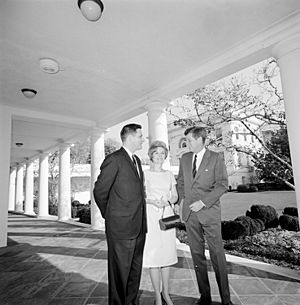
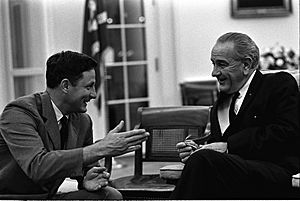
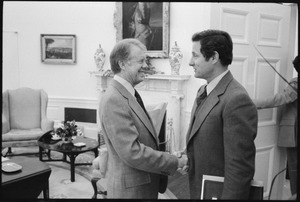
Writing constitutional amendments
As a new Senator, Bayh joined the Judiciary Committee. This committee deals with laws and the Constitution. In 1963, the chairman of the Subcommittee on Constitutional Amendments passed away. Bayh offered to lead the subcommittee and even pay for its staff himself. This allowed him to become chairman less than a year into his first term. In this role, Bayh was the main person behind two important changes to the U.S. Constitution.
Presidential succession
After President Dwight D. Eisenhower had health problems in the 1950s, people realized the Constitution wasn't clear about what happens if a president becomes unable to do their job. The assassination of President John F. Kennedy in 1963 made this issue even more urgent.
Bayh introduced an amendment in 1963. After much discussion, it was passed in 1965. This became the Twenty-fifth Amendment to the United States Constitution, which was approved in 1967. It created a clear plan for what happens if a president dies, resigns, or becomes unable to serve. It also set up a way to choose a new Vice President if that office becomes empty. This amendment has been used several times, including when Gerald Ford became Vice President and then President.
Lowering the voting age
Before becoming a Senator, Bayh tried to lower the voting age in Indiana. He continued this effort in the Senate. In 1970, a new part was added to the Voting Rights Act of 1965, which lowered the voting age to 18 for all elections. However, the Supreme Court later ruled that this only applied to federal elections, not state or local ones.
To fix this problem, Bayh's subcommittee quickly worked on a new constitutional amendment. This became the Twenty-sixth Amendment to the United States Constitution. It passed through Congress very quickly and was approved by the states within months. This amendment made sure that 18-year-olds could vote in all elections across the United States. Because of this, Senator Bayh is the only person since the Founding Fathers to have written more than one amendment to the U.S. Constitution.
1964 plane crash
On June 19, 1964, Senator Bayh, his wife Marvella, Senator Ted Kennedy, and an aide were in a small plane that crashed near Springfield, Massachusetts. They were flying to a political convention. The plane crashed in heavy fog. Bayh and his wife were hurt but could walk out of the plane. Senator Kennedy was seriously injured. Two others, including the pilot, died. Bayh bravely went back into the wreckage to help Kennedy, pulling him to safety.
Women's rights
Equal Rights Amendment
The Equal Rights Amendment (ERA) was proposed to make sure men and women have equal rights under the Constitution. It had been introduced many times before, but it never passed. In 1970, Bayh worked on a new version of the ERA. He based it on the idea of extending rights already in the Fourteenth Amendment to include gender.
The Senate passed Bayh's ERA in March 1972, sending it to the states for approval. It needed to be approved by 38 states within seven years. Many states quickly approved it, and Indiana was the last state to do so in January 1977. However, some states later changed their minds and took back their approval. Even though Bayh helped extend the deadline, the Equal Rights Amendment did not get enough states to pass.
"The Father of Title IX"
Bayh was very important in adding Title IX to the Higher Education Act. This law gives women equal chances in public education. Bayh wrote Title IX, was the first to introduce it in Congress, and was its main supporter in the Senate.
On February 28, 1972, Senator Bayh introduced the equal education part of the ERA as an amendment to the Higher Education Act. He spoke about how it was time to change old ideas about women's roles. He said that the amendment was an important step to give women an equal chance to go to schools they choose, learn skills, and get jobs with equal pay. Title IX became law on June 23, 1972. It is especially known for creating more opportunities for female athletes. Because of his work, Bayh is often called "the father of Title IX."
Supreme Court nominations
During his time in the Senate, Bayh successfully led the effort to stop two of President Richard Nixon's choices for the Supreme Court of the United States.
In 1969, Nixon nominated Clement Haynsworth to the Supreme Court. Some people were worried about Haynsworth's past decisions on workers' rights and civil rights. Bayh and others found that Haynsworth had ruled in favor of a company he owned stock in, which was a conflict of interest. Bayh became a leading opponent of the nomination. In November 1969, the Senate rejected Haynsworth's nomination.
In 1970, Nixon nominated G. Harrold Carswell. Many felt Carswell's legal record was not strong enough for the Supreme Court. A group of law students helped Bayh by researching all of Carswell's past cases. They found that many of his civil rights decisions had been overturned. With this information, Bayh led the opposition, and the Senate rejected Carswell's nomination as well.
President Nixon criticized Bayh and the Senate for these actions. Bayh responded by saying that the Senate was doing its job to carefully review presidential nominations. Eventually, Harry Blackmun was nominated and approved to fill the Supreme Court vacancy.
Electoral College reform
Bayh also worked to change how the U.S. President is elected. He wanted to get rid of the Electoral College and replace it with a system where the president is chosen by the most votes from the people (a popular vote). One of his proposals passed in the House of Representatives but was blocked in the Senate. He continued to support this idea throughout his career.
Juvenile justice reform
As chairman of the Subcommittee on Juvenile Delinquency, Bayh was the main person behind the Juvenile Justice and Delinquency Prevention Act. This law changed the youth prison system, making sure that young offenders were kept separate from adults. After hearings in 1971 about problems in youth prisons, Bayh introduced this law in 1972, and it became law in 1974. It also created an office within the Department of Justice to protect young people.
1976 presidential campaign
Bayh had planned to run for president in 1972, but he decided not to when his wife, Marvella, was diagnosed with cancer. Marvella Bayh later became a strong advocate for cancer awareness before her death in 1979.
On October 21, 1975, Bayh announced he would run for the Democratic presidential nomination in 1976. He was seen as a candidate who could connect with people. In the first important contest, the Iowa caucuses in January 1976, Bayh finished third. After disappointing results in other early elections, he ended his campaign on March 4, 1976.
Bayh–Dole Act
In 1978, Bayh learned that a new technology that could help predict how a patient would react to chemotherapy was not being used because of rules about inventions made with government money. At the time, there were many different rules for how inventions from federally funded research could be used.
Bayh worked with Senator Bob Dole to create a single, clear policy. Together, they wrote the University and Small Business Patent Procedures Act, now known as the Bayh–Dole Act. This law allows U.S. universities, small businesses, and non-profit groups to keep the rights to inventions created with federal government research money. President Jimmy Carter signed it into law on December 12, 1980.
The Economist magazine called the Bayh–Dole Act "possibly the most inspired piece of legislation to be enacted in America over the past half-century." Studies have shown that this law has greatly increased economic activity and created many jobs in the United States.
Senate re-election campaigns
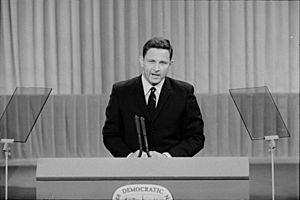
Birch Bayh ran for re-election to the U.S. Senate three times. In 1968, he won against William D. Ruckelshaus. In 1974, he won a very close race against Indianapolis Mayor Richard Lugar.
In 1980, Bayh faced Congressman and future Vice President Dan Quayle. Bayh lost his re-election bid to Quayle in a year when many Republicans won elections across the country.
After the Senate
Legal work and advocacy
After leaving the Senate in 1981, Birch Bayh started a law firm. He also served on the boards of several companies.
Bayh continued to support causes he believed in. He filed legal papers to support Title IX in court cases, arguing that it should prevent job discrimination in federally funded education programs. He also argued that universities should own patents for inventions made with federal funding, though the Supreme Court later disagreed on this point.
He continued to advocate for the direct election of the president, supporting the National Popular Vote Interstate Compact. This idea suggests that states agree to give their electoral votes to the candidate who wins the national popular vote.
Bayh also served on various boards and commissions, including one that studied presidential disability and the Twenty-Fifth Amendment.
In 2003, the historic U.S. Courthouse and Post Office in Indianapolis was renamed the Birch Bayh Federal Building and United States Courthouse in his honor. In 2009, Indiana State University named its College of Education after the Bayh family, as many family members, including Birch and his wife Marvella, had attended the university.
Personal life
Birch Bayh's first wife was Marvella Hern. They had a son named Evan Bayh, who was born in 1955. Marvella Bayh passed away from breast cancer in 1979. Birch Bayh later married Katherine "Kitty" Halpin in 1981. They had a son named Christopher, born in 1982.
Birch and Kitty Bayh lived in Easton, Maryland. Birch Bayh passed away from pneumonia on March 14, 2019, at the age of 91. He is buried at Arlington National Cemetery.
Electoral history
| Year | Democrat | Votes | % | Republican | Votes | % | Source |
|---|---|---|---|---|---|---|---|
| 1962 | Birch Bayh | 905,491 | 50.3% | Homer E. Capehart | 894,548 | 49.7% | |
| 1968 | Birch Bayh | 1,060,456 | 51.7% | William D. Ruckelshaus | 988,571 | 48.2% | |
| 1974 | Birch Bayh | 889,269 | 50.7% | Richard G. Lugar | 814,114 | 46.4% | |
| 1980 | Birch Bayh | 1,015,922 | 46.2% | Dan Quayle | 1,182,414 | 53.8% |
Images for kids
See also
 In Spanish: Birch Bayh para niños
In Spanish: Birch Bayh para niños


